Have you ever seen one of the Silver Y moths commonly known as an owlet in the garden? On Sunday I noticed one in the garden so I grabbed the camera to take a few photos. It’s been named after the silvery letter Y or Greek letter Gamma due to the markings on each of its forewings. It’s a member of the Noctuidae family which flies both day and night.
I took shots from every angle and wished that I had a macro lens on the camera rather than a 50mm. It sounded as if the paparazzi were in my garden. I was in continuous shooting mode. Thankfully he stayed long enough on the same plant for me to get back into the house again and get the macro lens.
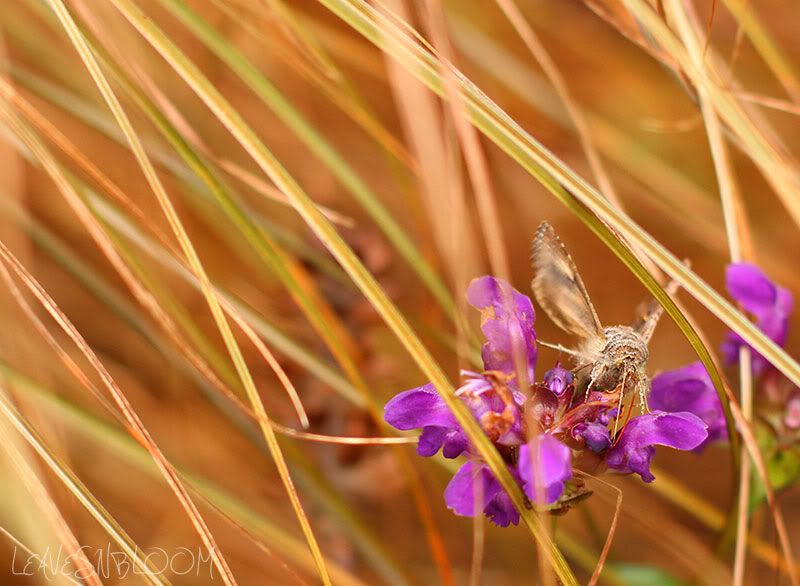 |
| I could be mistaken but that Silver Y moth proboscis looks red |
Its wings fluttered at such a speed as he hovered from one flower to the next. It didn’t seem to mind a camera lens nearby. Nor my hand moving some of the Carex grass so that I could get a better view.
Silver Y autographa gamma moths
Down south they have had an Indian Summer and many new moths have travelled across from Europe.
The Butterfly Conservation Charity has said that the Autumn of 2011 has seen the best immigration season for more than five years.
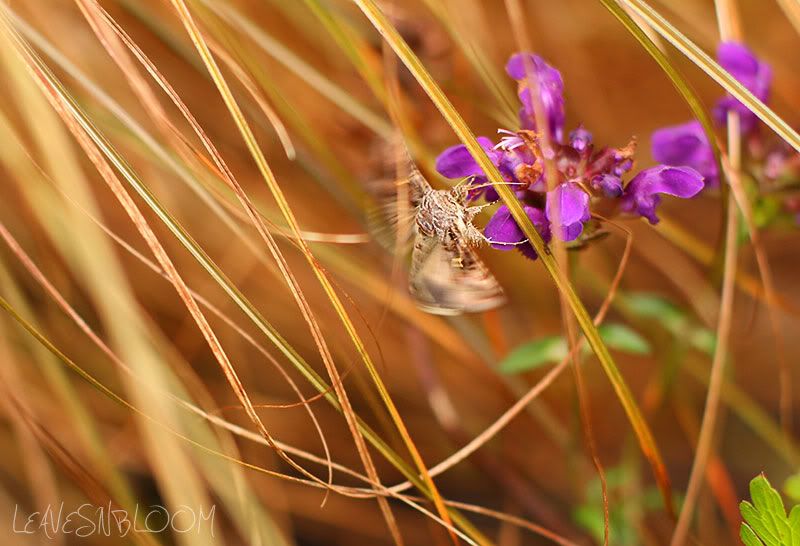 |
| If you look very closely I’m sure I can see a red coil which looks like the proboscis between the moths palps in this shot |
The Silver Y is an immigrant moth from the southern Mediterranean and Black Sea region. It migrates every year to places like Greenland, Finland and the UK. Here in the UK there are two generations per year. Likewise you’ve probably seen one looking in through the window at night when the light is on in the room.
Very Hungry Caterpillars
They fly in swarms of a thousand and more sometimes. As a result can be a pest to many as their offspring are very hungry green caterpillars. These caterpillars live on a diet of pea leaves, cabbages and Sugar beet. But can’t survive once the frosts arrive.
The caterpillar has a very finely tuned brain and it just eats and eats. Then it dissolves into liquid and becomes something 10 times bigger with the capacity to navigate like GPS.
GPS Navigation
Once adults they fly at altitudes of up to 1.2km when migrating and even end up at the Arctic circle. Now that winter is approaching the adults will soon be thinking about making their way back to Southern Europe.
“All these pieces of evidence together demonstrate that the moths must have a compass mechanism,” similar to that found in migratory birds”
Using entomological radar, the researchers estimated that in August 2003 about 200 million Silver Y moths migrated southwards over the U.K., travelling at more than 50 km per hour over distances in excess of 300 km per night. “Considering the distances these moths would have flown, and their sophisticated orientation behaviours, it is apparent that many will have reached their over-wintering regions in just a few nights,”
Finally this one needed a rest. Though it’s just as well he was resting on a blue piece of wood. I’d never have found him if he had landed on a tree trunk. He has a big journey ahead of him!
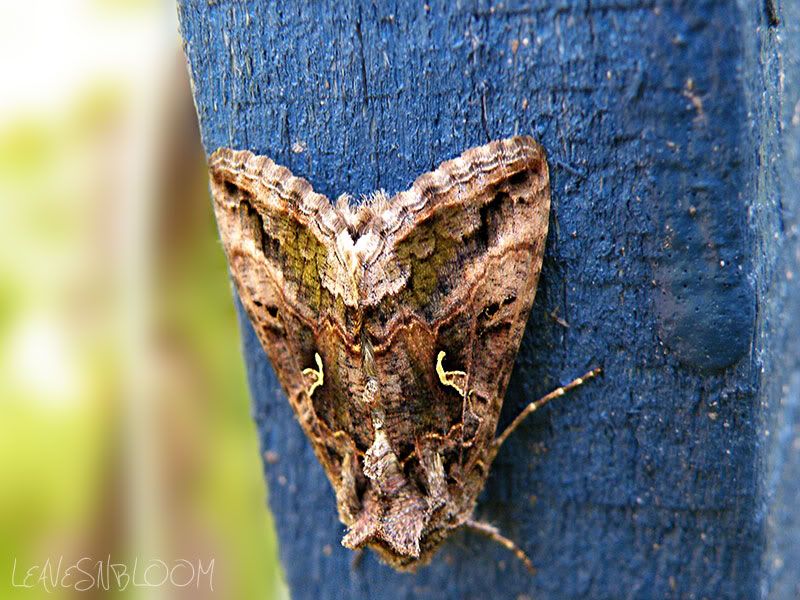 |
| You can see the distinctive Y shape on each forewing in this macro |
Considering that these little invertebrates only live for about 21 days once they have emerged as moths they sure cover some air miles. They certainly deserve the title of being high flyer’s of the noctuidae family. How awesome a Creator God we have!


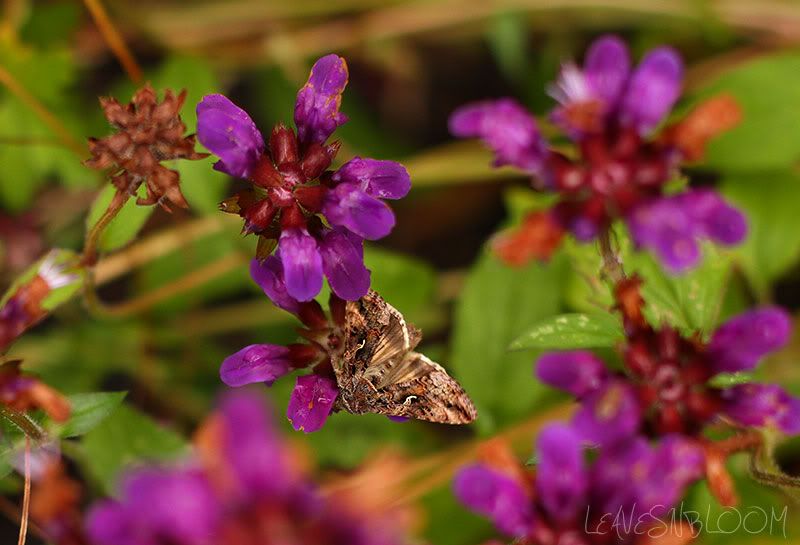

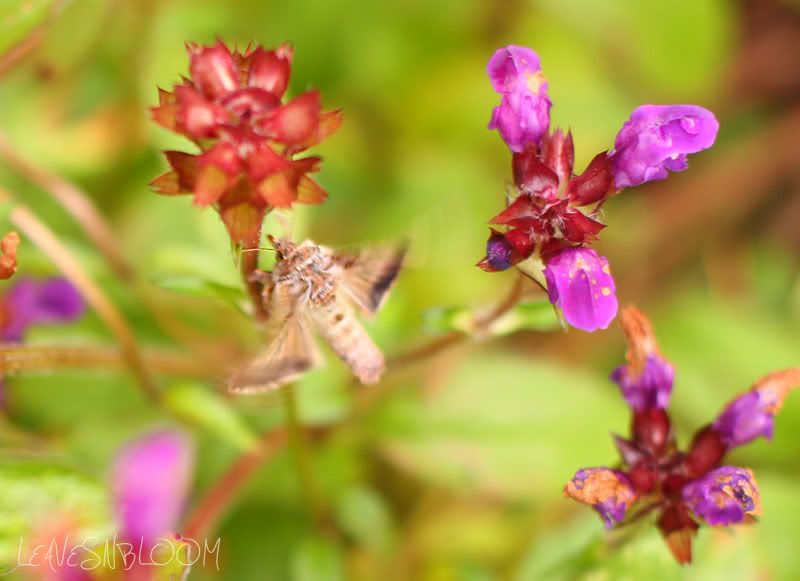

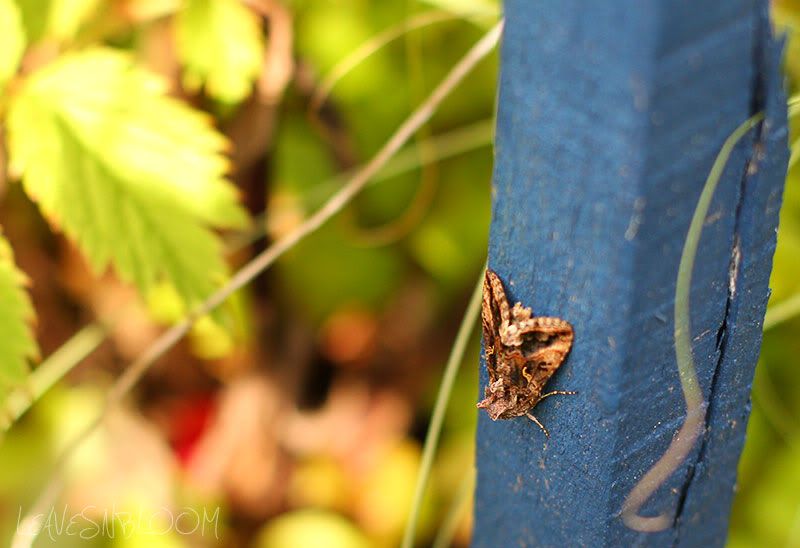
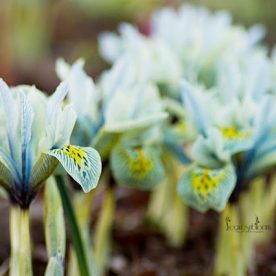


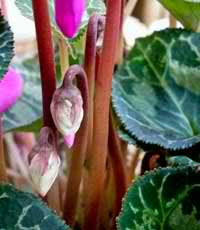


ONG
Fantastic pics and have to admit, I am loving the Carex shots the most. Love the purple blooms in conjunction with the chocolate colored grass. I own a few of those and absolutely love them. Great post!
leavesnbloom
@ONG I must admit that I love that colour scheme aswell – orange and purple go so well together.
Ellie
Wonderful pictures, the colours are lovely, and that butterfly is quite a handsome wee guy.
Carolyn ♥
You've shared some interesting facts about this moth that I never knew. Captivating!
Larry
Such an interesting post… thank you for sharing all this info! Larry
HolleyGarden
Great information – and wonderful pictures. Especially that last picture – perfect! I agree that it's amazing that they can live such a short time, yet know so much.
greggo
Love the macro. It's like an oil painting. A masterful artist indeed, our creator. So detailed and balanced, and a great flyer to boot.
Gatsbys Gardens
Rosie, this is a great looking moth, did you photograph it at night?
Many do not know the difference between moths and butterflies, but sometimes moths are more beautiful!
Eileen
Andrea
Amazing information you shared with us Rosie. It really is amazing how these creatures saved the GPS message through several generations, and they still remember it through time. I have some moths visiting me at night at the 5th Floor, however i don't have a macro. BTW, yes, i also see the red proboscis!
Lyn
Wonderful photos! Love that moth (and also St Augustine).
scottweberpdx
Beautiful…I agree on the Carex shots…they are stunning…that combo of the purple with the warm oranges…just perfect!
Curbstone Valley Farm
Beautiful photographs, especially with the gorgeous Carex. I think many of us walk right past moths, and don't give them a second thought, but as you show here, if you take the time to look, many of them are uniquely beautiful. I'm always impressed with how far some insects will travel, especially considering how short-lived they are. Remarkable.
Melanie
How lucky that the moth waited for you to get your camera. 🙂 Great info about it and its life. I threw one of those outside the other day. I think it was nearly dead because it didn't give more than a shudder when I picked it up.
The Sage Butterfly
These photos are so beautiful with the lavender against the golden hues of the other plants. And it is so interesting to learn about this moth. I have seen them around the yard and garden.
Wife, Mother, Gardener
Pretty autumn at its best! It is so much more fun when wildlife chooses to be photogenic… and you appreciate it more after missing some great shots of other wildlife!
It is not unusual for us in PA to have our first snow for the 1st of Oct either. It has not come yet & I am soaking up the last days before the frost!
deb duty
Amazing photos and thanks so much for taking the time to share information about this moth. I enjoyed learning about him.
Gail
Wonderful critter shots and the colors in your photos are stellar. Inspiring, too. gail
Carol
These are very beautiful shots! I love the colors and movement in each. Lovely moth. Thanks for the education about it. Yikes snow and sleet already!